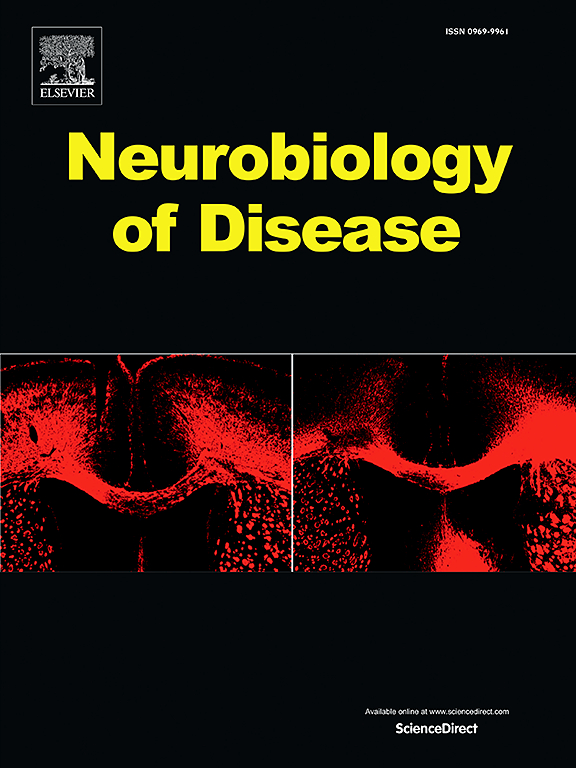PYK2 in the dorsal striatum of Huntington's disease R6/2 mouse model
IF 5.1
2区 医学
Q1 NEUROSCIENCES
引用次数: 0
Abstract
Huntington's disease (HD) is a devastating disease due to autosomal dominant mutation in the HTT gene. Its pathophysiology involves multiple molecular alterations including transcriptional defects. We previously showed that in HD patients and mouse model, the protein levels of the non-receptor tyrosine kinase PYK2 were decreased in the hippocampus and that viral expression of PYK2 improved the hippocampal phenotype. Here, we investigated the possible contribution of PYK2 in the striatum, a brain region particularly altered in HD. PYK2 mRNA levels were decreased in the striatum and hippocampus of R6/2 mice, a severe HD model. Striatal PYK2 protein levels were also decreased in R6/2 mice and human patients. PYK2 knockout by itself did not result in motor symptoms observed in HD mouse models. We examined whether PYK2 deficiency participated in the R6/2 mice phenotype by expressing PYK2 in their dorsal striatum using AAV vectors. With an AAV1/Camk2a promoter, we did not observe significant improvement of body weight, clasping, motor activity and coordination (rotarod) alterations observed in R6/2 mice. With an AAV9/SYN1 promoter we found a slightly higher body weight and a trend to better rotarod performance. Both viruses similarly transduced striatal projection neurons and somatostatin-positive interneurons but only AAV9/SYN1 led to PYK2 expression in cholinergic and parvalbumin-positive interneurons. Expression of PYK2 in cholinergic interneurons may contribute to the slight effects observed. We conclude that PYK2 mRNA and protein levels are decreased in the striatum as in hippocampus of HD patients and mouse models. However, in contrast to hippocampus, striatal viral expression of PYK2 has only a minor effect on the R6/2 model striatal phenotype.
求助全文
约1分钟内获得全文
求助全文
来源期刊

Neurobiology of Disease
医学-神经科学
CiteScore
11.20
自引率
3.30%
发文量
270
审稿时长
76 days
期刊介绍:
Neurobiology of Disease is a major international journal at the interface between basic and clinical neuroscience. The journal provides a forum for the publication of top quality research papers on: molecular and cellular definitions of disease mechanisms, the neural systems and underpinning behavioral disorders, the genetics of inherited neurological and psychiatric diseases, nervous system aging, and findings relevant to the development of new therapies.
 求助内容:
求助内容: 应助结果提醒方式:
应助结果提醒方式:


